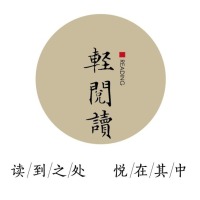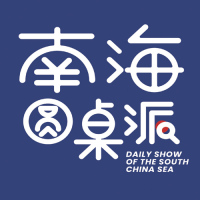The Truth About the South China Sea: 80 Years After WWII — The Construction and Disruption of Order in the South China Sea
The South China Sea order has undergone fundamental changes since the modern era. Before modern times, China and Southeast Asian countries utilized the convenient maritime routes of the South China Sea to conduct regional trade and cultural exchanges, as well as interregional commerce and cultural interactions with the Middle East, Europe, and South Asia.
During the late Qing Dynasty, the intrusion of colonialism and imperialism led to the collapse of the traditional South China Sea order, which had been characterized by “the benefits of fisheries and salt” and “the convenience of shipping”. This order was superseded by a geopolitical competition centered on controlling strategic maritime passages. France, Britain, Japan, among others, all engaged in intense rivalries in their attempts to dominate these crucial sea lanes.

(In March 1939, Japan dispatched troops to occupy China's Xisha and Nansha Qundao.)
In the late 19th and early 20th centuries, Japan’s ambition to dominate East Asia became increasingly apparent. Subsequently, control over the South China Sea’s islands, reefs, and shipping lanes emerged as a critical springboard for Japanese militarism’s “Southward Expansion Policy”. During World War II, Japan occupied the Xisha Qundao and Nansha Qundao, renaming parts of the Nansha Qundao as the the “New Southern Islands”. It stationed military forces there and constructed facilities such as airstrips and radio stations on several features. Japan also established or began planning submarine bases on some of these maritime features. The occupation and transformation of these South China Sea features into strategic strongholds and military bases for its colonial empire marked the region’s descent into a full-fledged colonial order.
In August 1945, Japan was defeated in World War II and formally signed its surrender aboard the USS Missouri (BB-63) the following September, marking the conflict’s conclusion. During this period, major powers including China, the United States, the United Kingdom, and the Soviet Union undertook persistent efforts to establish a peaceful and secure international order — a framework that would also extend to the South China Sea.
This year marks the 80th anniversary of the victory in both the Chinese People’s War of Resistance Against Japanese Aggression and the World Anti-Fascist War. Over the past eight decades, the South China Sea order has once again evolved. Yet throughout this period, the fundamental principle of preserving peace and stability as essential to maintaining the post-World War II order in the region has remained constant.
The Dual Dimensions of the Postwar Order in the South China Sea

(The Cairo Declaration clearly stipulated that Japan must return all the territories it had seized from other nations.)
After World War II, the order in the South China Sea was reshaped alongside the formation of the broader international order. The primary focus of this reconstruction was territorial arrangements. However, the allocation of maritime rights in the South China Sea also gradually took shape during the development of the modern international maritime order.
The return of the South China Sea Islands, which had been illegally occupied by Japan, to China constituted an essential aspect of the postwar regional order.
In 1943, the strategic landscape of World War II witnessed a pivotal turning point. To enhance military cooperation among the Allied powers and deliberate on rebuilding the postwar international order, the leaders of China, the United States, and the United Kingdom engaged in extensive negotiations. On December 1 of that year, they simultaneously issued the Cairo Declaration from Chongqing, Washington, and London, a document that subsequently received endorsement from the Soviet Union.
During the drafting process, the British government sought to obscure the disposition of territories occupied by Japan, advocating for the phrase “shall be relinquished by Japan” rather than explicitly stating “shall be restored to the Republic of China”. Through persistent diplomatic efforts, the Chinese government ultimately secured American support, ensuring the final text clearly stipulated that “all the territories Japan has stolen from the Chinese, such as Manchuria, Formosa, and The Pescadores, shall be restored to the Republic of China.”
In 1945, as World War II approached its conclusion, the Allied forces initiated comprehensive counteroffensives across both European and Asian theaters, leading to the collapse of Japan’s clandestine peace diplomacy. On July 26 of that year, China, the United States, and the United Kingdom jointly issued the Potsdam Declaration, which was subsequently endorsed by the Soviet Union the following month. The Declaration unequivocally reaffirmed that “the terms of the Cairo Declaration shall be carried out and Japanese sovereignty shall be limited to the islands of Honshu, Hokkaido, Kyushu, Shikoku and such minor islands as we determine.”
Upon Japan’s surrender, both the Philippines and France began to assert claims over South China Sea islands and reefs in 1946. The Philippines argued that the Nansha Qundao, situated within 200 nautical miles of Palawan, should fall within its defense perimeter. France, reviving its prewar position, dispatched forces in October 1946 to illegally occupy several features in the Nansha Qundao including Nanwei Dao and Taiping Dao.

(On December 14, 1946, a flag-raising ceremony and a formal handover ceremony for the Nansha Qundao were held on Taiping Island.)
In this context, and acting in accordance with the Cairo and Potsdam Declarations, the Chinese government moved to reassert sovereignty over the South China Sea islands in October 1946. Chinese personnel took control of various features in the Xisha and Nansha Qundao, erecting sovereignty markers and publishing an official administrative map in 1948 that clearly delineated China’s maritime claims with the eleven-dash line.
The entire process — from the Cairo and Potsdam Declarations to China’s resumption of sovereignty over the South China Sea islands in accordance with postwar arrangements — collectively constituted the territorial settlement for these maritime features and established the new postwar order in the South China Sea.
Following the substantial completion of territorial arrangements, the United Nations convened the First Conference on the Law of the Sea in Geneva from February 24 to April 27, 1958, which produced four conventions and an optional protocol. A second conference was held in 1960 but yielded limited results. In 1973, the UN convened the Third United Nations Conference on the Law of the Sea in New York, concluding in 1982 with the adoption of the United Nations Convention on the Law of the Sea (UNCLOS). China took an active part in the Third Conference and played a significant role in shaping key maritime regulations governing territorial seas, exclusive economic zones, and continental shelves.
UNCLOS has provided a crucial legal basis for the allocation of maritime rights in the South China Sea, building upon historical practice and constituting an integral component of the regional maritime order. Particularly against the backdrop of countries like the Philippines and Vietnam showing interest in the region’s oil and gas resources since the 1960s, the maritime regime and international practice established by UNCLOS have affirmed the scope of maritime rights to which China is entitled based on its sovereignty over the South China Sea Islands and its long-standing historical presence in the region.

(In 1956, a Filipino named Tomas Cloma illegally occupied islands of China's Nansha Qundao under the guise of "exploration" and laid claim to them.)
The Philippines, Vietnam, Malaysia and other claimant states have sought to justify their territorial claims over South China Sea features through historical and legal arguments. Nevertheless, the postwar territorial arrangements concerning the region remain unequivocally clear. Historical evidence reveals that while the Philippines has asserted sovereignty over Huangyan Dao and certain features in the Nansha Qundao, its territorially defined boundaries established after World War II explicitly excluded these areas — a position concurrently acknowledged by the United States. During the immediate postwar period, the Democratic Republic of Vietnam likewise consistently recognized Chinese sovereignty over the Xisha and Nansha Qundao, repeatedly affirming this stance through diplomatic channels.
Geopolitical Erosion of Order in the South China Sea
The evolving international situation has progressively undermined the post-World War II order in the South China Sea. Territorial arrangements, which formed the bedrock of this order, have faced sustained erosion, while shortcomings in the international law of the sea have been amplified by the Philippines, the United States, and others. Consequently, the system of international legal rules — a crucial component of the South China Sea order — now confronts mounting challenges from geopolitical power dynamics.
The United States, as a principal architect of the post-World War II international order, has publicly maintained a position of neutrality regarding territorial sovereignty disputes. In practice, however, its policies have systematically dismantled the very South China Sea order it helped create. Since the 1970s, the Philippines, Vietnam, and Malaysia have illegally occupied over 40 islands and reefs in China’s Nansha Qundao, including Zhongye Dao — territories China had recovered and garrisoned in the immediate postwar period. Though fundamental designers of the postwar system, both the United States and Britain have not only ignored these violations but have tacitly endorsed and supported attempts by the Philippines and Vietnam to consolidate their illegal control over Chinese maritime territories.
The rules-based order governing the allocation of maritime rights in the South China Sea, established in the postwar period, has likewise suffered erosion.
While the 1982 UNCLOS contains certain limitations, these shortcomings could have been substantially mitigated had the instrument fully accounted for the region’s distinctive historical context and geographical circumstances. Even where technical or textual constraints prove difficult to circumvent, UNCLOS remains indispensable as the primary framework regulating maritime claims and conduct. Its consistent application is essential to maintaining a rules-based order in the South China Sea.

(In comic: The "Legal" Law: Just or Unjust?)
However, the United States and the Philippines have sought to reconfigure the allocation of maritime rights in the South China Sea through deliberate misinterpretation of UNCLOS, and by promoting extralegal practices portrayed as “international law”. With U.S. support, the Philippines unilaterally initiated the South China Sea arbitration case. The resulting award — which China has consistently rejected as null and void — attempted to categorize features by maritime entitlements, asserting that some could not generate exclusive economic zones, others could only generate territorial seas, and some could generate no maritime rights at all. It also wrongfully denied China’s historical rights to resource development within the dashed line.
Beyond this, U.S. military operations in the South China Sea — including its so-called “freedom of navigation” patrols and other activities in sensitive waters — are fundamentally at odds with both the rules and purported principles of international law. By distorting and misapplying UNCLOS, the United States, the Philippines, and several other governments have undermined the authority of international legal norms. In doing so, they have allowed geopolitical competition to progressively erode the foundations of the rules-based maritime order in the region.
The South China Sea Order Is Not a Battle Between the “Old” and the “New”
On June 26, 1945, representatives of 50 nations gathered in San Francisco to sign the Charter of the United Nations. The Charter begins by unequivocally stating its purpose: “to maintain international peace and security.” This foundational principle embodied the collective aspiration of nations to preserve shared values while respecting differences, and to establish a durable international order following World War II.
Whether through defining territorial arrangements or clarifying the allocation of maritime rights in the South China Sea, the fundamental objective has always been to prevent the conflicts — and their consequent challenges to international order — that ambiguity and deliberate postponement could provoke. In practice, however, from the Cairo Declaration to the 1951 Treaty of San Francisco, which ended Japan’s role as an imperial power, colonial powers such as the United States, France, and Britain repeatedly sought to perpetuate outdated systems and arrangements, preserving their access to strategic islands and maritime spaces in the region. As anticipated, coastal states including the Philippines and Vietnam, together with the United States, have exploited these unresolved issues within the postwar framework to advance their own strategic agendas.

(The Philippines has recently repeatedly intruded into China's Nansha Qundao. This photo shows Philippine vessels illegally congregating in adjacent waters of China's Huangyan Dao, with the China Coast Guard implementing necessary maritime control measures.)
Current developments confirm that whenever the postwar order is disrupted, tensions in the South China Sea persist until a new equilibrium is established. The fundamental cause of the escalating regional situation over the past thirteen years lies in the deliberate undermining of the post-World War II South China Sea order by the United States, the Philippines, and several other states.
First, territorial disputes continue to simmer beneath the surface, with conflicts among claimant states intensifying. The Philippines’ attempts to assert control over Huangyan Dao, maintain presence at Ren’ai Jiao by reinforcing its illegally grounded vessel, and establish a permanent outpost at Xianbin Jiao have all heightened maritime tensions and challenged the post-World War II South China Sea order. Similarly, Vietnam and other countries have conducted extensive land reclamation and construction on illegally occupied features in the Nansha Qundao, cementing their unlawful control while exacerbating disputes among claimant states.
Second, a new wave of maritime enclosure has sparked legal confrontations manifested through diplomatic protests and patrol enforcement. From the South China Sea arbitration case to successive submissions on continental shelf delimitation, and from disputes over the legal status of maritime features to controversies regarding historic rights under international law, claimant states continue to generate new legal conflicts. Beyond diplomatic maneuvers and “rhetorical exchanges”, confrontations triggered by patrol operations and jurisdictional enforcement have become routine occurrences.
Third, the United States has increasingly emerged as the primary source of instability in regional security. Its “freedom of navigation operations” targeting China, combined with intelligence gathering, close-in reconnaissance, and military activities including deterrence-oriented transits, battlefield preparation drills, and joint tactical exercises, have rendered international legal norms increasingly ineffective against geopolitical power competition. These actions have not only demonstrated the vulnerability of rules-based frameworks but have also progressively intensified strategic competition between China and the United States in the South China Sea.

(In April 2024, the United States, the Philippines, Japan, and Australia conducted a joint maritime exercise in the South China Sea)
It must be acknowledged that the United States — the predominant power with unparalleled influence in the postwar international architecture — faces an undeniable challenge from China’s rapid rise. Viewed through this lens, Washington’s erosion of the very South China Sea and international order it helped build reflects a recurrent pattern in international politics. The American objective has shifted from preserving the “old order” to forging a “new order” in the South China Sea, or at least reshaping the existing framework to better serve U.S. strategic interests.
Behind the evolving territorial arrangements, redistribution of maritime rights, and shifting U.S. regional posture lies a consistent underlying logic: America’s pursuit and perpetuation of its hegemonic position. The convergence of these three factors is systematically dismantling the post-World War II South China Sea order, creating unprecedented regional security tensions. Structural contradictions among claimant states over territorial sovereignty and maritime jurisdiction persistently generate confrontations, collisions, and emergent incidents, accompanied by continuous diplomatic friction. Meanwhile, Washington’s coordinated military maneuvers in these waters have intensified Sino-American strategic competition, rendering the regional security landscape increasingly volatile and unpredictable.
For the South China Sea region and the overwhelming majority of nations globally, the post-World War II order in these waters constituted an integral component of the broader international architecture. Forged through immense sacrifice and reflecting the collective will of both regional and international communities, this order provided the essential foundation that enabled the region to recover rapidly from wartime devastation and achieve sustained peace, prosperity, and development.
Reflecting on the past, assessing the present, and looking to the future, we recognize that regional prosperity and national development remain inseparable from a peaceful and stable South China Sea. Historical experience demonstrates that territorial disputes and sovereignty violations have consistently been the most frequent triggers of armed conflict worldwide. Therefore, the respect for, return to, and preservation of the post-World War II South China Sea order must not be obscured by near-sighted political interests, nor compromised by hegemonic pursuits of major powers.
(Author: Chen Xiangmiao, Director of the South China Sea History and Culture Research Institute at the National Institute for South China Sea Studies, and Special Researcher of the CMG Expert Committee on South China Sea Studies)














